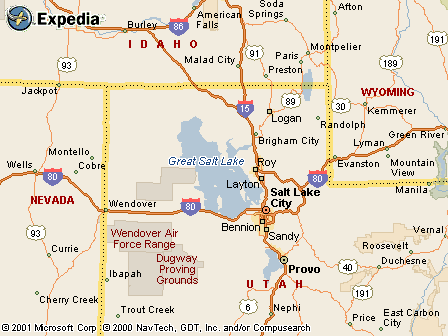|
|
Canku Ota |
|
|
(Many Paths) |
||
|
An Online Newsletter Celebrating Native America |
||
|
November 3, 2001 - Issue 48 |
||
|
|
||
|
Artist Re-creates Ancient Utah Indian Moccasins |
||
|
by Vince Horiuchi-Salt Lake Tribune-October 22, 2001 |
The Utah Museum of Natural History asked Fonicello, a self-taught tanning artist and quill worker, to replicate ancient American Indian moccasins that lay buried in a cave north of the Great Salt Lake for as long as 1,000 years. Making moccasins the same way that ancient Indians did was like stepping into a time machine, she said. "I spent a lot of time wondering who they were," said Fonicello, who has a studio in Wilsall, Mont., and reproduces ancient leatherwork for other museums. "I was so impressed with their craftsmanship." Fonicello was contracted by the University of Utah museum to produce two pairs of moccasins for its display, based on the tattered remains of 250 moccasins unearthed from a site known as the Promontory Cave. In 1930 and 1931, renowned anthropologist Julian Steward uncovered a collection of artifacts from the cave that included the moccasins, a drum head, and bows and arrows. Radiocarbon dating indicates the moccasins are between 400 and 1,000 years old, belonging to an unknown tribe of bison hunters that must have swept into the region between the Fremont and Shoshone tribes, said museum collections manager Kathy Kankainen. The collection was stored in boxes at the U. until Sen. Bob Bennett, R-Utah, secured a "Save America's Treasures" grant for $50,000 to preserve and reshape the moccasins. Most of the shoes were flattened from the weight of the two feet of dirt in which they were buried. With the grant money, the U. hired Arizona conservator Nancy Odegaard to restore the moccasins to their original shape. She used an alcohol-water solution. About a year ago, Fonicello began examining every stitch of the moccasins to better understand the techniques used to make them. Each moccasin was composed of two pieces of buffalo or deer hide: A "puckered toe" that makes up the sole and sides, and the vamp or tongue of the shoe. Some also had a third piece to make a cuff to cover the ankle, and the soles usually were made from unprocessed leather. Some would have frills, and others were lined with fur to keep out the cold. The collection also includes 12 shoes that were for children. Members of the tribe likely used bone awls to puncture holes in the hide and possibly cactus spine to thread the pieces together with sinew. "The first thing that impressed me was the fine quality of work in the stitch. They didn't have needles then," Kankainen said. Using the same kinds of tools (except she used a steel needle) and materials, Fonicello spent months making the two new pairs to be included in the museum display of the moccasins. They will give visitors an idea of how the shoes looked when their owners had them. One pair is based on a moccasin at least 400 years old, with porcupine quills stitched into the vamp for detail. Fonicello says that one shoe likely is the oldest example of porcupine quill embroidery in the world. "I was so amazed the art form went back so far," she said. "I felt an interesting connection of myself to the person who was making this moccasin. It was a revelation for me, being a quill worker as long as I have." So far, about 65 of the 250 moccasins have been reshaped by Odegaard and the museum staff, and 50 more will be done by spring. The remainder are so fragile, museum officials will not attempt to restore them. About 20 are on display at the museum. "It speaks to a culture that was really into this beautiful art form," Kankainen said of the collection. "When you look at these, you can't help but feel this human connection between yourself and the people back then." |
|
|
|
Promontory Cave
Moccasins: |
|
|
||
|
|
||
| Canku Ota is a free Newsletter celebrating Native America, its traditions and accomplishments . We do not provide subscriber or visitor names to anyone. Some articles presented in Canku Ota may contain copyright material. We have received appropriate permissions for republishing any articles. Material appearing here is distributed without profit or monetary gain to those who have expressed an interest. This is in accordance with Title 17 U.S.C. section 107. | ||
|
Canku Ota is a copyright © 2000, 2001 of Vicki Lockard and Paul Barry. |
||
|
|
|
|
|
The "Canku Ota - A Newsletter Celebrating Native America" web site and its design is the |
||
|
Copyright © 1999, 2000, 2001 of Paul C. Barry. |
||
|
All Rights Reserved. |
||

